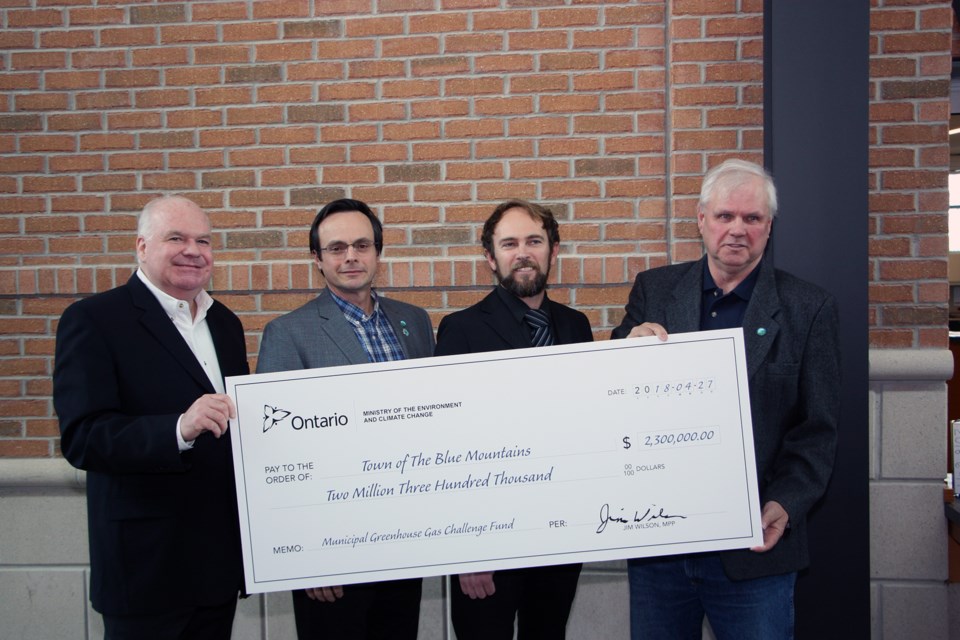Thanks to a $2.3 million cheque from the provincial government, Blue Mountains will be building a pipeline and pump house to carry leachate from the landfill to the wastewater treatment plant.
The money, presented to the town by MPP Jim Wilson on April 27, comes from an application submitted by town staff to the Municipal Greenhouse Gas Challenge Fund.
Wilson thanked Blue Mountains staff for their application and congratulated them on achieving the grant from the province.
“We’re doing what’s right by the environment,” said Wilson.
Jeff Fletcher, manager of solid waste and environmental initiatives, oversaw the application process. He said he and his staff have been thinking up ways of dealing with leachate (the contaminated water that leaks out of a landfill) since opening up a new cell at the landfill in 2015. The new area was created by mining an older portion of the landfill to create new space and the cell was lined to prevent leachate from absorbing into the ground.
Since then, the town has been filling trucks with the collected leachate and driving the contaminated water to the wastewater treatment plant in Craigleith. Leachate can be cleaned up so the water can be returned to its source.
Over the last two years, the town hauled 25,000 cubic metres of leachate annually, according to a press release issued by the town. That’s about 700 diesel truck loads and 165,000 kilometres of travel in a year. By building a pipeline directly from the landfill (Grey Road 40 and 2) to the Thornbury wastewater treatment plant (Grey Street South, on the east end of Thornbury), the town will be reducing 25,143 equivalent carbon dioxide tonnes by the year 2051, according to the press release. The operational savings is about $75,000 a year. The pipeline will be about 5 km long, according to Fletcher.
In addition to the $2.3 million from the province, the town will spend about $250,000 on the project plus about $75,000 in-kind.
The pipeline will be run by a pump station, which Fletcher hopes will also be equipped with solar panels on the roof. The panels will feed power back into the grid.
If it’s successful, the new pump station will serve as a model for future pump station construction in The Blue Mountains.
According to Fletcher, the project is still in the design stage. The Environmental Assessment is complete, and he estimates the pipeline will be complete by the end of 2018. He expects the pipeline and pumping station to last the life of the landfill and even longer as the town undertakes mining and other projects at the landfill to further extend the life of the site.
In addition to getting trucks off the road, the pipeline should make things easier at the landfill and the water treatment plant.
“It’s much easier to send things slowly through a pipe than hitting the plant with a truckload at a time,” said Fletcher.
Leachate, while treatable, has different chemistry to regular household wastewater and can sometimes require more or different treatment. Fletcher said the industry standard for a wastewater treatment plant is to make sure only about two per cent of the wastewater coming to the plant is from leachate.
Fletcher said the Thornbury water treatment plant is not yet at capacity, but will need to be expanded in the next five to ten years due to development in Thornbury.
Part of the process for installing the new pipeline will include a treatability study, which would determine what, if anything, needs to change at the Thornbury water treatment facility to make sure the leachate is treated effectively.



